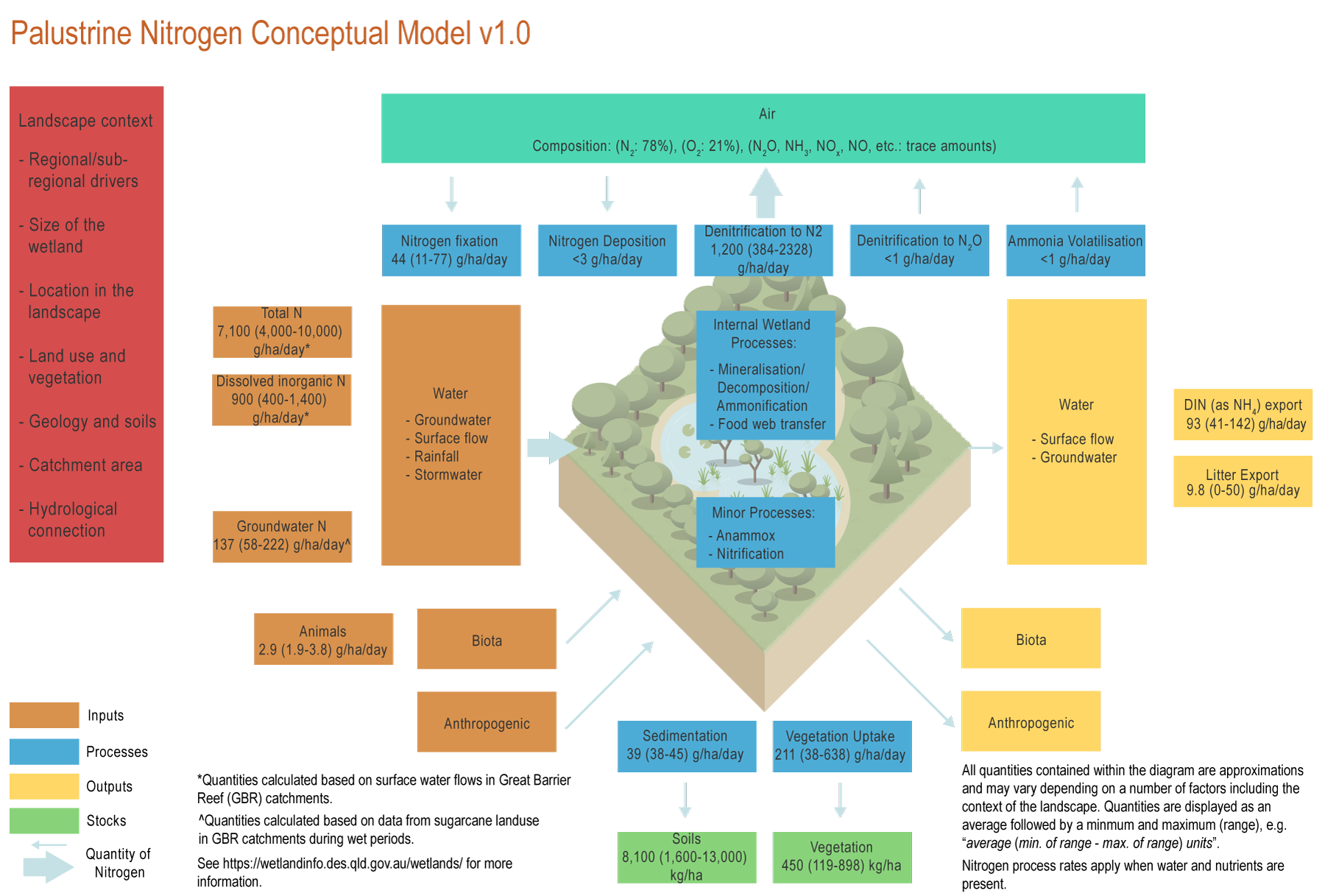|
|
PalustrinePalustrine – Stocks
The conceptual models were compiled by researchers in collaboration with a wide range of stakeholders from Natural Resource Management groups, universities and government agencies and based on available scientific information[4]. Click on elements of the model or select from the tabs below Nitrogen stocks in palustrine wetlands are large due to organic rich soils and, in some palustrine wetlands, large trees. SoilsMost of the nitrogen stored in palustrine wetlands (90%) is in the soil, especially the near surface layers (less than 1 m)[2][1], with nitrogen stocks up to 1,600 kg/ha. In palustrine wetlands with peat soils stocks, the peat can reach depths of over one metre and values of N can be >13,000 kg/ha[1]. VegetationIn forested palustrine wetlands, the trees can store > 119 kg/ha, with some forests of Melaleuca quinqueflora and Melaleuca quinquenervia storing up to 900 kg/ha[1]. BiotaPalustrine wetlands often contain temporary populations of crocodiles (in north Queensland), turtles, fish, birds, reptiles, and bats, which store nitrogen in their tissues. References
Last updated: 31 July 2021 This page should be cited as: Department of Environment, Science and Innovation, Queensland (2021) Palustrine – Stocks, WetlandInfo website, accessed 8 May 2025. Available at: https://wetlandinfo.des.qld.gov.au/wetlands/ecology/processes-systems/nitrogen-concept-model/palustrine/stocks.html |

 — Department of the Environment, Tourism, Science and Innovation
— Department of the Environment, Tourism, Science and Innovation

